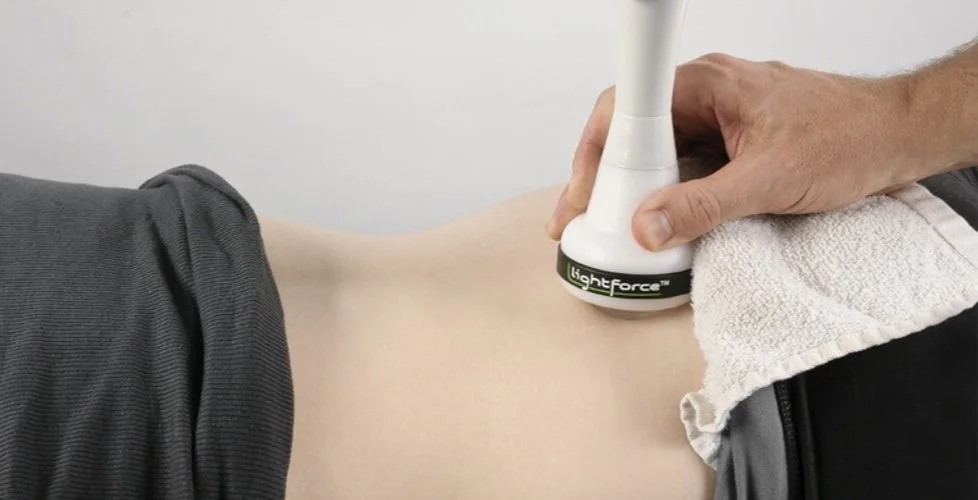Class 4 Laser Therapy for Joint Pain and Soft-Tissue Healing: The Science Behind Faster Recovery
Introduction
When you’re dealing with joint pain, sprains, or soft-tissue injuries, the goal for many isn’t just pain relief, it’s getting back to full function as quickly as possible.
That’s where Class 4 laser therapy comes in. This cutting-edge, non-invasive treatment uses high-powered light energy to stimulate healing deep within tissues through a process known as photobiomodulation.
At Mountain Health and Performance in North Vancouver, Class 4 laser therapy has become a valuable part of comprehensive care plans for athletes and active individuals recovering from joint inflammation, tendon injuries, and muscle strains.
Let’s break down how it works, what the research says, and when it can be most beneficial.
What Is Class 4 Laser Therapy?
Laser therapy works by delivering specific wavelengths of light into tissues. Unlike low-level or “cold” lasers, Class 4 lasers operate at a higher power (over 500 mW), allowing the light to penetrate several centimeters deep into muscles, tendons, and joints with treatments being much shorter than those with using the lesser powered units.
When absorbed by cells, this light energy triggers a biological response known as photobiomodulation (PBM) which stimulates the mitochondria (the cell’s energy factories) to produce more ATP, the molecule responsible for cellular energy and repair.
In short: it helps injured tissues heal faster, function better, and hurt less.
How Laser Therapy Promotes Healing
Research shows that Class 4 laser therapy provides several key physiological benefits:
Reduces inflammation: By lowering levels of pro-inflammatory cytokines (like IL-1 and TNF-α)
Accelerates tissue repair: Enhances collagen production and fibroblast activity
Increases circulation: Promotes oxygen delivery and waste removal in the treatment area
Decreases pain: Blocks nerve transmission of pain signals and releases endorphins
Studies have shown that Class 4 PBM improved both pain and function in patients with musculoskeletal conditions, including arthritis and tendon injuries.
Conditions That Respond Well to Class 4 Laser Therapy
At Mountain Health and Performance, Class 4 laser therapy is often used for:
Joint inflammation and osteoarthritis (knees, hips, shoulders)
Tendon and ligament injuries (Achilles, rotator cuff, lateral elbow)
Muscle strains and overuse injuries
Post-surgical tissue healing
Nerve-related pain (such as mild carpal tunnel or sciatica)
Joint mobility and pain reduction is often reported after just 3–5 laser sessions in patients with chronic knee osteoarthritis.
What to Expect During a Session
A typical Class 4 laser therapy session at MHP lasts 5–10 minutes depending on the treatment area.
You’ll wear protective eyewear while your clinician moves a handheld laser over the targeted region. The laser emits gentle warmth which many describe as soothing, similar that of sun exposure.
There’s no downtime, and patients often notice reduced discomfort and stiffness within a few sessions.
For chronic or long-standing injuries, a course of 6–10 treatments spaced several days apart is often recommended for optimal results.
The growing evidence supports Class 4 laser therapy as a safe and effective adjunct to manual therapy, exercise, and rehabilitation.
When to Consider Class 4 Laser Therapy
Class 4 laser therapy may be right for you if:
You’re managing chronic inflammation or soft-tissue pain
Your recovery has plateaued despite consistent treatment
You want a non-invasive option that accelerates healing
You experience joint stiffness or swelling that limits movement
For athletes, it’s particularly valuable between training cycles or during return-to-play rehabilitation, when inflammation control and tissue repair are crucial.
The Mountain Health and Performance Approach
At Mountain Health and Performance, we integrate Class 4 laser therapy with targeted movement therapy, soft-tissue release, and strength training for a comprehensive recovery strategy.
Rather than masking pain, our clinicians aim to optimize tissue healing and address the root cause, whether it’s poor load management, muscular imbalance, or restricted joint mobility.
Laser therapy helps us bridge the gap between early recovery and full performance, allowing you to return to the activities you love with confidence.

